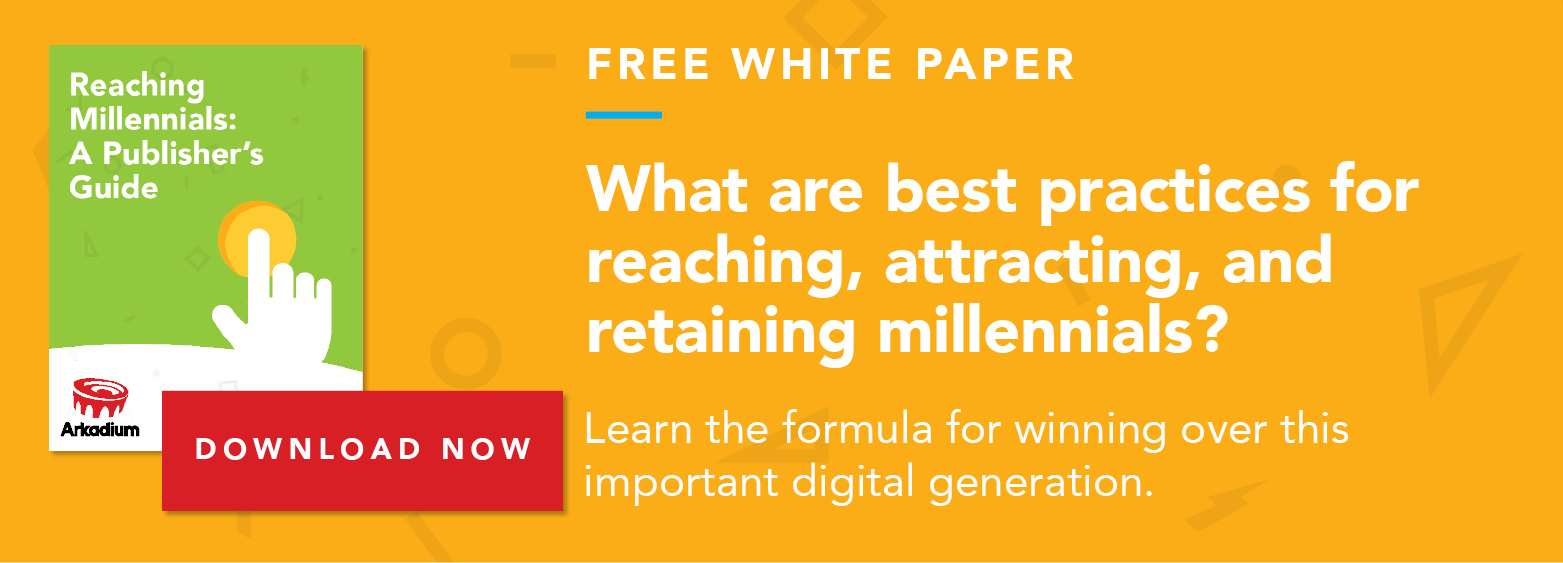Source: AdWeek
By Jess Rovello, CEO, Arkadium
Millennials: The word alone is probably enough to draw a reaction from most people. In digital media, however, this generation has represented one thing: a profitable audience.
But as millennials transition to adulthood, publishers and advertisers alike are diverting their collective attentions to the next generation: Generation Z.
The successor generation to millennials is the first to have been immersed in digital since birth. So, while publishers and advertisers can employ some of the tactics used to reach, attract, engage and retain millennials, there’s still plenty to learn.
But the question remains: How do you reach, attract, engage and retain this generation? Here are three things that can help.
Know your audience
This generation of digital natives is comprised of those born from the mid-1990s to the mid-2000s. Currently, Gen Z makes up one-quarter of the population. And by 2020, it will account for 40 percent of all consumers.
As digital natives, Gen Z-ers are constantly consuming media through their personal devices, and they spend considerable time engaged with social media apps. In fact, about one-half of them are connected online about 10 hours per week.
Gen Z already boasts an astonishing $44 billion in annual purchasing power, with 75 percent of participants in an IBM survey saying that they spend more than one-half of the money that’s available to them each month.
For brands, messaging matters, of course, but perhaps not as much as product quality. The IBM study also found that 52 percent of Gen Z consumers will transfer loyalty from brand to brand if they find product quality to be subpar. Correspondingly, 66 percent said quality and availability are the most prominent issues when choosing one brand over another.
Overall, Gen Z-ers expect experiences to be both experiential and rewarding—they’re not wooed or easily impressed by extravagant or intrusive content. It’s become clear that connecting with this generation will require a change in strategy from both digital publishers and advertisers.
Tap into audience consumption habits
When targeting Gen Z, digital publishers are paying attention to which social platforms they’re flocking to the most. Female-focused Gen Z publisher Obsessee turned to social media to reach its desired audience. Interestingly, Obsessee doesn’t have a traditional homepage or website for that matter. Instead, all of its content exists on social media platforms—10 of them, to be exact.
But to understand where Gen Z consumes content, it’s important to first understand where it doesn’t. According to a study conducted by digital agency Deep Focus, 29 percent of Gen Z-ers deem Facebook outdated and “uncool.” Instead, they prefer platforms that allow for more visual creativity. More than 56 percent regularly use messaging applications such as Snapchat.
For Gen Z, media consumption is more than just entertainment—it’s part of their daily routine, from start to finish. According to eMarketer, Gen Z’s time on publisher sites show more time and engagement with video than text. 57 percent of 13- to-17-year-olds said they’re watching more short-form video than they did a year ago. Just 45 percent of millennials—defined here as 18- to-34-year-olds—said the same.
Another publisher taking a unique approach to luring Gen Z-ers is Galore, which has opted for a branded approach to content. Galore focuses on creating content for marketers, connecting them with influencers and monetizing in a way isn’t off-putting to Gen Z consumers. CEO Mike Albanese noted the stark contrast between Galore’s methods and the long-accepted approach of yesteryear, saying the key is to “make a lot of content, figure out how to drive lots of traffic, get some big audience numbers and kind of wrap advertising around it.”
By tying advertisers directly into the content creation process, Galore may be at the forefront of what could become the way to digitally connect with Gen Z.
Embrace innovation
Gen Z has come of age on digital media. Research conducted by Kantar Millward Brown suggests that Gen Z prefers innovative advertising formats such as native ads and branded content over other digital advertisements, like banner and display ads.
The study found that only 29 percent of Gen Z responds positively to desktop display ads—a significantly smaller percentage than millennials, of which 41 percent respond positively. Similarly, only 22 percent and 21 percent responded positively to mobile display ads and mobile video ads, respectively.
The Kantar Millward Brown report explains that advertisers and publishers must “stop using invasive, non-skippable online formats that are disliked by all generations … embrace branded content, which is a more popular format. For Gen Z, make ads interactive and use innovative online formats.”
Gen Z also appreciates when advertisers respect their digital space, responding positively toward mobile rewards video and skippable pre-rolls, which achieved net positive scores of 41 percent and 15 percent, respectively, in the study.
In contrast, non-skippable pre-rolls and pop-ups are the most negatively received ad formats among Gen Z, likely because of screen clutter.
There’s no question that Gen Z is prompting a dramatic shift in how digital publishers and advertisers think about, create and serve content. Those who embrace the generation’s core habits—and understand the differences between Gen Z-ers and millennials—should be well-prepared for the next generation of digital media.


